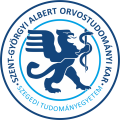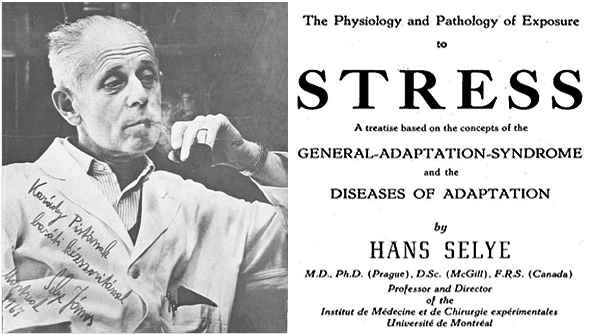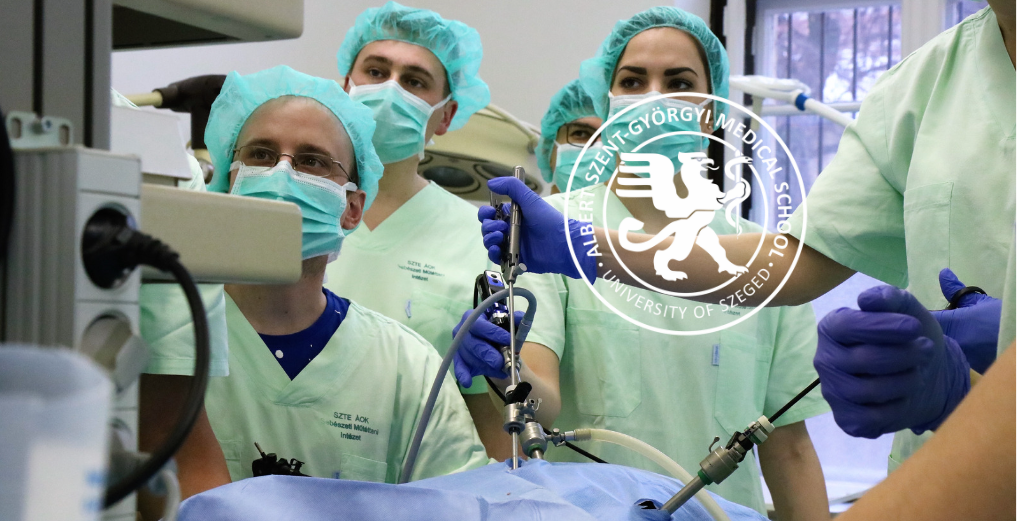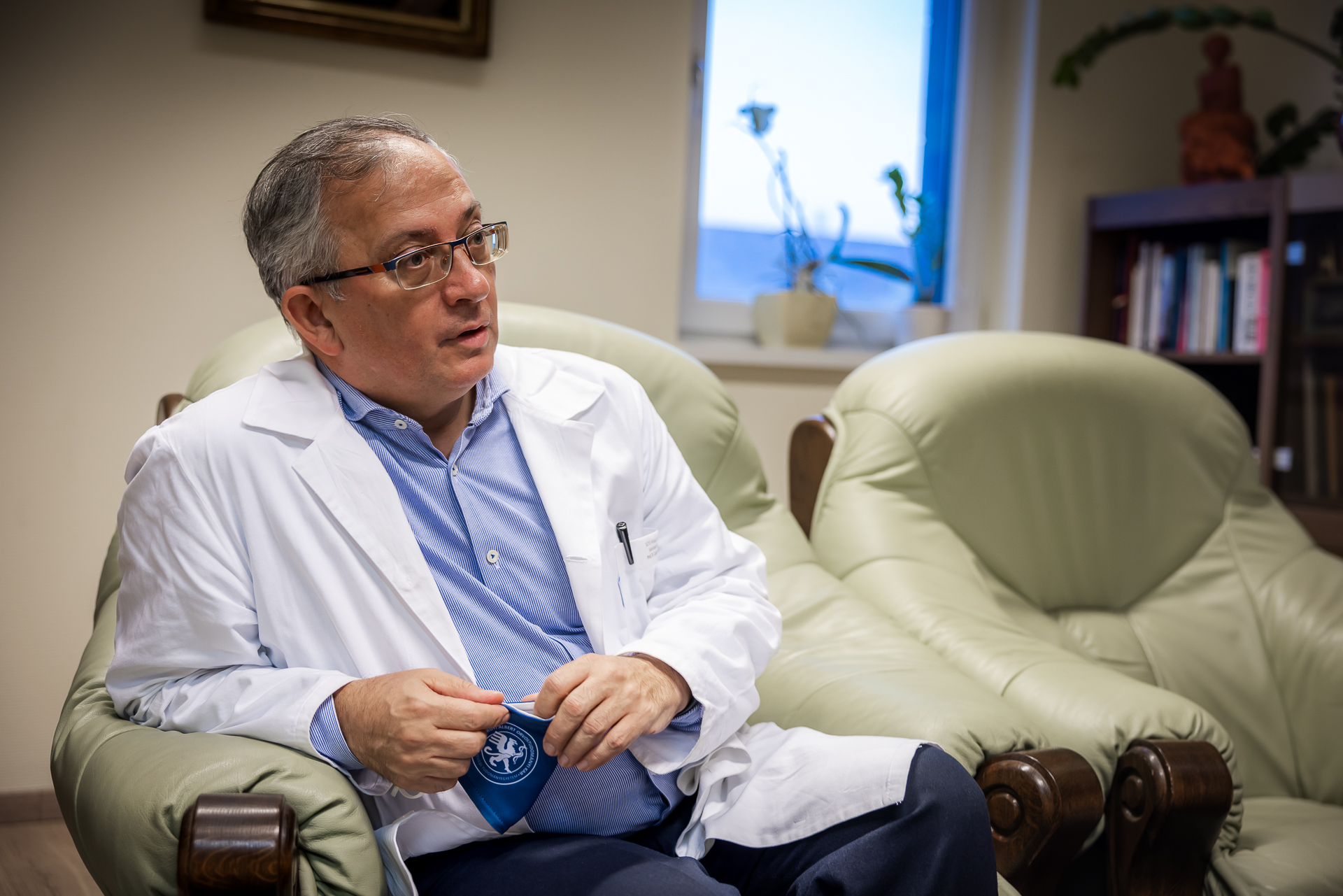MISSION and HISTORY
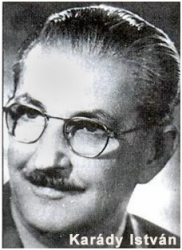 The Department of Pathophysiology can boast some of the most renowned scientific achievements in the history of the University of Szeged. Our institute was established by Prof. Dr István Karády in 1951. Prior to this, Dr. Karády served as a distinguished professor of the King Edward University School of Medicine. Dr. Karády specialized in internal medicine and neurology and published in German, English and Hungarian. Of note, he wrote the seminal Pathophysiology book in Hungarian, a work which was used by generations. Not one to rest on his domestic achievements, Professor Karády accepted numerous visiting chairs at prestigious universities throughout Western-Europe, Canada and in the United States.
The Department of Pathophysiology can boast some of the most renowned scientific achievements in the history of the University of Szeged. Our institute was established by Prof. Dr István Karády in 1951. Prior to this, Dr. Karády served as a distinguished professor of the King Edward University School of Medicine. Dr. Karády specialized in internal medicine and neurology and published in German, English and Hungarian. Of note, he wrote the seminal Pathophysiology book in Hungarian, a work which was used by generations. Not one to rest on his domestic achievements, Professor Karády accepted numerous visiting chairs at prestigious universities throughout Western-Europe, Canada and in the United States.
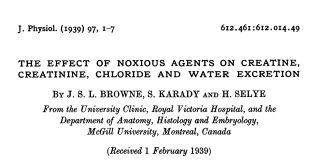 His most fruitful collaboration lasted for decades with Professor János (Hans) Selye, one of the most influental researchers in the field of life sciences. Selye coined the idea of the General Adaptation Syndrome or as it is simply considered, the “stress response.” Dr. Selye was nominated for the Nobel-prize seventeen times. Unfortunately, the Nobel Prize eluded Dr. Selye due to his strenuous rejection of contemporary Eastern-European establishments; his mother having been killed by gunfire during the Hungarian Revolution, in 1956.
His most fruitful collaboration lasted for decades with Professor János (Hans) Selye, one of the most influental researchers in the field of life sciences. Selye coined the idea of the General Adaptation Syndrome or as it is simply considered, the “stress response.” Dr. Selye was nominated for the Nobel-prize seventeen times. Unfortunately, the Nobel Prize eluded Dr. Selye due to his strenuous rejection of contemporary Eastern-European establishments; his mother having been killed by gunfire during the Hungarian Revolution, in 1956.
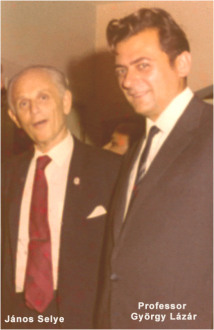 During Professor Karády’ era (1951-1974) the most notable members of the staff were Dr György Lázár, Dr Árpád Gecse, Dr. Géza Horpácsi, Dr Lajos Kis, Dr. János Lonovics, Dr. László Mustárdy, Dr Velimír Nikolasev, Dr Anna Ottlecz, Dr. András Prókai and Dr Eleonóra Zsilinszky. Later, Prof. Dr. became the head of the 1st Department I. of Internal Medicine and the dean of the Medical Faculty (2000-2003).
During Professor Karády’ era (1951-1974) the most notable members of the staff were Dr György Lázár, Dr Árpád Gecse, Dr. Géza Horpácsi, Dr Lajos Kis, Dr. János Lonovics, Dr. László Mustárdy, Dr Velimír Nikolasev, Dr Anna Ottlecz, Dr. András Prókai and Dr Eleonóra Zsilinszky. Later, Prof. Dr. became the head of the 1st Department I. of Internal Medicine and the dean of the Medical Faculty (2000-2003).
It was István Karády’s disciple, the late Professor György Lázár, continued this fruitful cooperation here in Hungary and in Selye’s world-famous institute in Montreal, Canada. Professor Lázár later achieved the honor of doctor of the Hungarian Academy of Sciences (HAS) for his work in the field of immunology. Following the passing of Professor Karády, Professor Lázár served as a head of the department for a year in 1975.
Professor, Dr Árpád Gecse, another alumnus of Professor Karády’s school, followed a different but similarly distinguished path. With a career spanning already over 50 years, he is a well-known researcher of inflammation, a most revered teacher and a famous author of several textbooks on pathophysiology. He spent years in several laboratories in the UK and the USA (University of London, University of Oklahoma and University of Texas). Out of Dr Gecse’s and Dr Mezei’s students, Dr Béla Kiss made the most distinguished career. Having gained training in a Harvard University affiliated hospital, he now works as associate professor in the Interventional Radiology Department of the Moffitt Cancer Center.
In 1975 Professor Gyula Telegdy accepted the chairmanship of the Department and this date represents a milestone in the development of the institute. Under his direction, our department has become recognized internationally. In addition to Professor Telegdy, three of his colleagues (Professor Dr László Vécsey, Professor Dr Gábor Kovács, and the late Professor Dr István Vermes) have became the members of the HAS. Under Telegdy’s chairmanship, 26 researchers have achieved their PhDs and with two further becoming DSc of the HAS. Professor Telegdy’s immense contribution to neuroendocrinology amounts to more than 400 publications. He also established several fruitful collaborations with leading researchers from all over the world. The most notable collaboration partners are Professor Egon Diczfalusy, Professor David de Wied and Professor Andrew Viktor Schally, with whom Professor Telegdy or his colleagues published 9, 64 and 51 full papers, respectively. All of the aforementioned scientific partnerships meet the highest standards in peer-reviewed science and resulted in 2 patents as well.
Professor Diczfalusy (1920-2016) who received his medical degree in Szeged gained the mentorship of Nobel-laureate Professor Albert Szent-Györgyi. In 1946, he emigrated to Sweden, where he quickly became the leader of the Division of Clinical Chemistry in the Karolinska Institut with the help of the Nobel-laureate Hans von Euler-Chelpin. It was Professor Diczfalusy, who, with contribution of researchers from Szeged (e.g. Professor Telegdy and Professor Bártfai) formulated the concept of the feto-placental-unit.
Professor David de Wied (1925-2004) begun his work attempting to merge some of the scientific thesis by Selye and Szent-Györgyi (his PhD is titled: Vitamin C, Adrenal gland and Adaptation, 1952). Later, he became a world-famous endocrinologist, the first to realize the activity of neuropeptides. He served as the head of the Royal Netherlands Academy of Arts and Sciences from 1984 to 1990. With his support, Professor Vermes became the board member of the Royal Dutch Academy of Sciences.
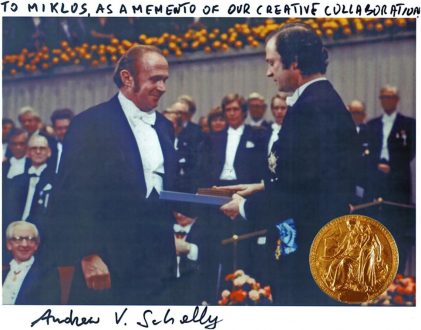 Professor Telegdy’s most prominent collaboration partner is the Nobel-laureate Professor Andrew Viktor Schally, who received the prize for the discovery of the hypothalamic-pituitary-target organ axis in 1977. He and Roger Guillemin (a protégé of Dr Selye) established the much sought after link between the central nervous system and the endocrine organs. Since then, Dr. Schally’s group has developed numerous peptide analogues, some of which have become major therapeutic assets in the treatment of prostate cancer. Several researchers from our department (Dr Tibor Kádár, Dr Mátyás Fekete and Dr Miklós Jászberényi) were fortunate enough to visit Professor Schally’s Polypeptide, Endocrine and Cancer Institute in the USA.
Professor Telegdy’s most prominent collaboration partner is the Nobel-laureate Professor Andrew Viktor Schally, who received the prize for the discovery of the hypothalamic-pituitary-target organ axis in 1977. He and Roger Guillemin (a protégé of Dr Selye) established the much sought after link between the central nervous system and the endocrine organs. Since then, Dr. Schally’s group has developed numerous peptide analogues, some of which have become major therapeutic assets in the treatment of prostate cancer. Several researchers from our department (Dr Tibor Kádár, Dr Mátyás Fekete and Dr Miklós Jászberényi) were fortunate enough to visit Professor Schally’s Polypeptide, Endocrine and Cancer Institute in the USA.
Following the retirement of Professor Telegdy the department was lead for almost two decades by Professor Gyula Szabó, a DSc of the HAS, who established himself as a distinguished expert on alcohol abuse and the impact of neuropeptides on drug addiction. His work was acknowledged by several invitations to scientific institutions in the United States such as the University of Colorado Health Sciences Center and the National Institutes of Health. Professor Szabó took the lecturing and teaching of students to the next level in our department. His unique, single-authored lectures notes, greatly expand the scope of the subject and utilize the most illustrious and up-to-date resources (Harrison’s, Nature, New England Journal of Medicine).
Now the neuroendocrine research programs are being lead by Dr habil. Zsolt Bagosi MD PhD; Dr Krisztina Csabafi, MD, PhD; Dr habil Zsófia Mezei, MD, PhD, Dr Júlia Szakács MD, PhD, Prof. Dr habil. Gyula Szabó, MD, PhD, DSc, Dr habil. Miklós Jászberényi, MD, PhD, DSc and Prof. Dr habil. Gyula Telegdy, MD, PhD, ordinary member of HAS. Out of Dr Bagosi’s students Dr Miklós Palotai started his career in the world-famous Brigham and Women's Hospital directed by Prof. Dr Ferenc Jolesz (1946-2014). Now Dr Palotai is employed as an instructor by the Department of Radiology at the Harvard Medical School.
The present head of the department is Professor Dr Zoltán Rakonczay, MD, PhD, DSc. Under his directorship our curriculum has been being extensively revised and synchronized with the material addressed by partner institutions. Professor Rakonczay serves as the head of the LIVE LONGER grant (EFOP-3.6.2-16-2017-00006, which encompasses €5 million budget for 4 years.

